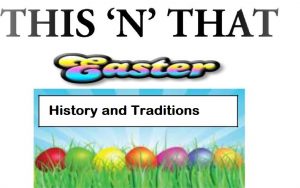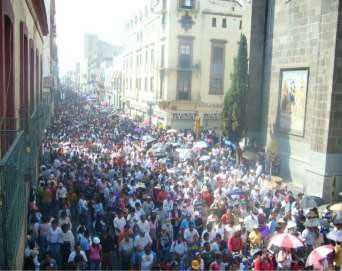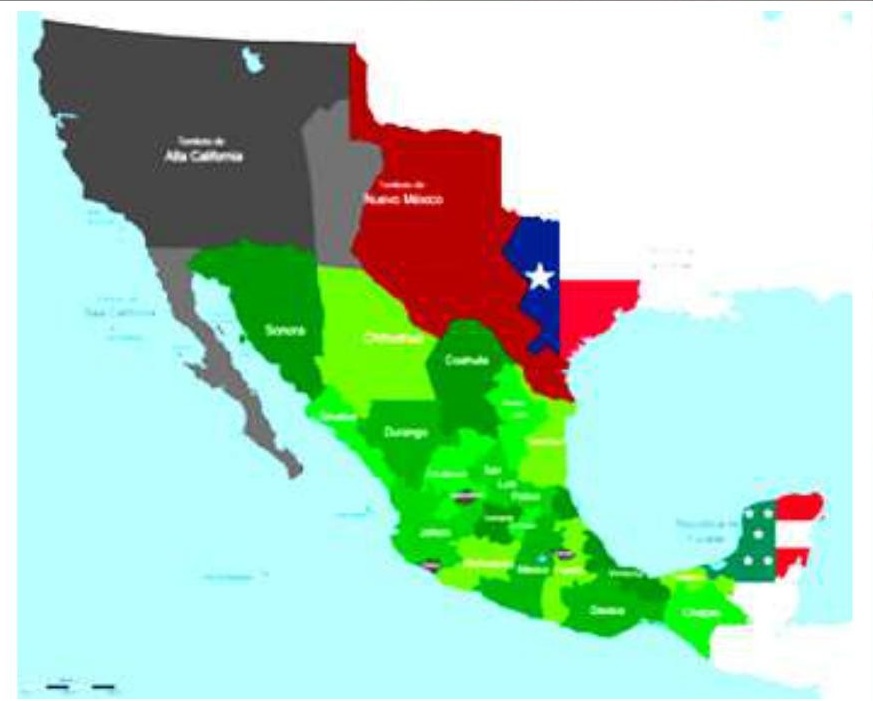By Vivian Molick from the March 2011 Edition

Easter is celebrated by Christians all over the world rejoicing in the resurrection of Jesus Christ from the dead. Like almost all Christian holidays it had a secular side as well. It is said that Easter was originally a pagan festival, but many cultural historians say that the celebration of Easter was actually a convergence of three traditions – Pagan, Hebrew and Christian.
The origin of Easter is owed to the old Anglo-Saxon
Teutonic tribes’ mythology. The original spelling was Eastre (or sometimes Eostre) and was the name of their pagan goddess of spring and off-spring. They celebrated the whole month of April, with a festival held at the vernal equinox (when the day and night get an equal share of the day). As it happened, the pagan festival of Eastre occurred at the same time of the year as the Christians observed the resurrection of Christ. Early Christian missionaries seeking to convert the people of the Teutonic tribe adopted the celebration of Eastre’s festival as their own, simply substituting one festival for another. This allowed the new converts to continue their tradition, but its meaning and purpose had changed. The early English Christians decided to use the name ‘Easter’ so that it would match (almost) the name of the old spring celebration.
An actual date for the Easter celebration wasn’t established until 325 A.D., when Emperor Constantine met with church leaders and together decreed that it would fall on the first Sunday after the first full moon after the spring (vernal) equinox, which is always March 21. Therefore, Easter is observed anywhere between March 22 and April 25 each year. Orthodox Christians use the Julian calendar which typically makes the holiday a week or two after the Western churches, which follow the Gregorian calendar.
In the U.S. the early settlers were mostly Puritans and they did not believe in ceremonies related to religious festivals, so, it wasn’t until after the Civil War that Easter and its importance came to be felt in America through the initiative of the Presbyterians. People slowly found the teachings of the resurrection a great source of motivation and hope.
In Mexico Easter is known as ‘Domingo de Pascua. ‘Semana Santa’ and ‘Pascua’ are two different observances which form part of the Easter celebrations; ‘Semana Santa’ stands for the entire Holy Week – from Palm Sunday to Easter, whereas ‘Pascua’ is observed for the period from Resurrection Sunday to the following Saturday. Easter bunnies and jelly beans are not very common in Mexican Easter celebrations, as people are busy attending church masses.
Easter season in Mexico begins with the carnival in Mazatlan. This carnival is the third largest carnival celebration in the world, after Rio de Janeiro and New Orleans. Offices and schools are closed for two weeks; a week before Easter and a week after, which makes it a perfect time for vacations and most government offices and banks are closed. The beaches are flooded with large families of campers and day-trippers (as we can all attest). In many communities, plays related to the events of Christ’s life are enacted on Holy Thursday and
Good Friday. The actors that perform in these plays prepare for their roles for the entire year and in some communities they even perform a real crucifixion. In some Mexican cities a ‘Procesión de Silencio (a silent procession) takes place where people march down the streets holding candle lights in silence. Another tradition followed in Mexico is the burning of a Judas effigy filled with firecrackers. Though the custom was outlawed in the 1960s when thousands died due to a massive explosion, it is still followed in rural areas.
During Lent (the forty-six day period just prior to Easter Sunday) red meat is forbidden, but seafood is permitted. Also a popular food called nopal (a type of cactus) is prepared with salads, shrimp, eggs or tacos.
As Easter started to take on a more secular spirit in the U.S., the Easter bunny and Easter eggs became more symbolic of the holiday. To find the origin of the bunny we go back to the pagan goddess Eastre, whose symbol was the rabbit or hare. The eggs also go back to the Teutonic tribes where the giving and receiving of eggs was a common tradition symbolizing rebirth and renewal, as it is in most cultures. As early as the second century wealthy people covered eggs in gold leaf, while peasants dyed theirs with flowers and herbs.
As we follow the history and traditions of Easter we must mention Easter bonnets and the famous Easter parade in New York City. The parade had its beginning in the 1870s, where the church goers would carry
Easter flowers from St. Thomas Church to St. Luke’s
Church. The social elite would attend services and parade down the street to give onlookers (and each other) a chance to show off their new Easter fashions. (The original Easter head accessory was not a bonnet or hat, but instead, head wreaths with fresh flowers, with the wreath symbolizing the earth’s orbit around the sun as well as the cycle of the seasons.) After the Civil War, mothers and daughters who had been wearing the dark colors of mourning for a long time began wearing colorful flowered hats and elaborate corsages as part of the Easter celebration. Their hats were adorned with fresh flowers and if the flowers were not blooming they would make them from paper, ribbon, feathers or sea shells.
As the parade grew (expanding out of 5th Avenue and extended from Madison Square to Central Park) so did the ‘bonnets’. It became a tradition to wear hats decorated with almost insane amounts of detail: ribbons, bows, flowers and even bird nests. The parade was made into an American icon with the 1948 Judy Garland movie “The Easter Parade”, in which Irving Berlin wrote a song about the Easter bonnet.
“In your Easter bonnet, with all the frills upon it….” ~~ Irving Berlin 1948.

Download the full edition or view it online




You must be logged in to post a comment.